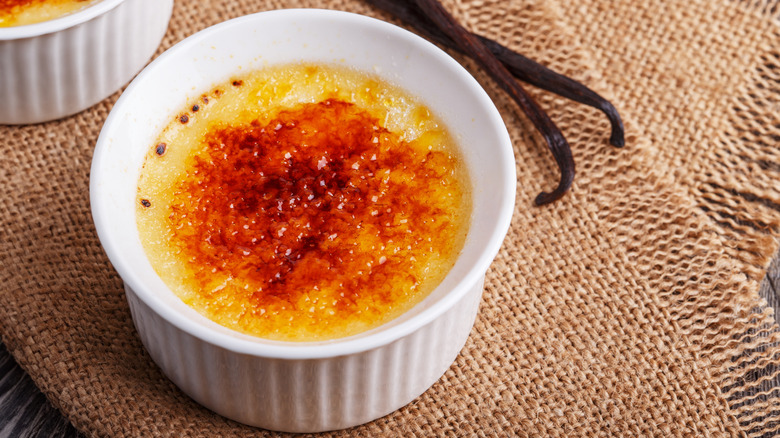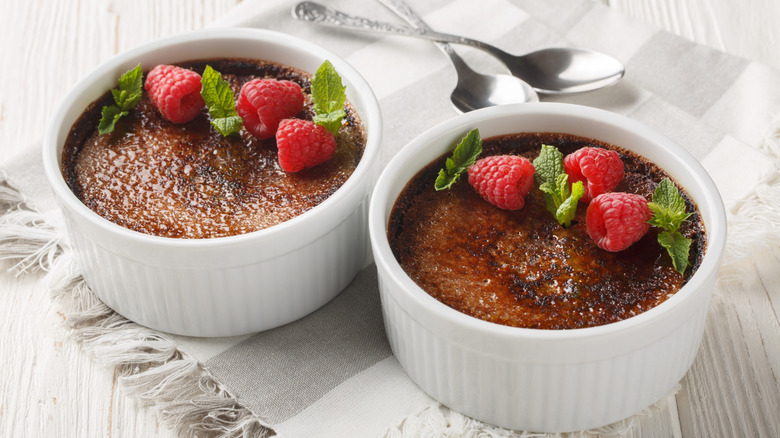The Best Way To Get A Crackly Crème Brûlée Top Without A Torch
Crème brûlée is one of those classic desserts that just feels rich and luxurious. While you probably have tons of burning crème brûlée questions on your mind when it comes to making it yourself, it's actually not as difficult to put together as it may appear. In fact, it can be made with just three ingredients when you're in a pinch – and you can even whip up some crème brûlée bagels if you're feeling like an overachiever. While the recipe itself may be simple, it's usually the whole "torch the custard with a literal flame" bit that can throw some people off. And what if you don't happen to have a kitchen torch lying around? Luckily, there's one kitchen tool you can use to get that classic crackly top: your oven's broiler.
Similar to a torch, your broiler is a quick and easy way to hit the top of those brûlées with fire, which is a key factor needed to help create that shiny and brittle top that everybody loves to crack. To use it, you'll want to bake and cool the custard per your recipe's directions. Once your custard has cooled, turn on your oven broiler, sprinkle the tops of your dessert with granulated sugar, and gently place them directly under the flame. You'll want to watch these as they can burn quickly — anywhere between five to 10 minutes should do the trick. And make sure to rotate them every few minutes to ensure they crisp up evenly.
Other tips for making crème brûlée at home
When making your own crème brûlée, there are a few other things to keep in mind in order to get the best results. One is that you don't want to forget to strain your custard. This helps ensure that you get a perfectly smooth and creamy dessert. All you have to do is grab your fine mesh strainer and pour your egg, sugar, vanilla, and cream mixture through it before filling your ramekins. Another technique you don't want to skip is baking your dessert in a water bath. While you may want to go straight to baking your cups on a baking sheet, using a boiling water bath will help ensure that the custard cooks slowly and evenly, keeping the center perfectly creamy. When pouring in the water to make the bath in a baking dish, just make sure that it comes to about halfway of the ramekins.
Another tip you can do is to bring the oven temperature down after the bake so that once your custards have set and cooled and are ready to hit the broiler, the residual heat from the oven doesn't accidentally overcook them. You can do this easily by keeping the oven door cracked open while your custard is cooling in the refrigerator.


